#organic fertilizer for flowering plants
Text
5 Type of Best Organic Fertilizers That You Must Have for Your Home Garden
Organic fertilizers are a substance composed of animal or vegetable matter used alone or in combination with one or more non synthetically derived elements or compounds.
These fertilizers are naturally produced and are materials that can be added to soil or plants, in order to provide nutrients and sustain growth.
Typical organic fertilizers include all animal waste including meat processing…
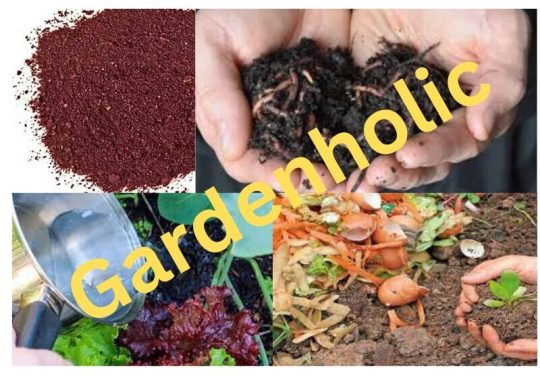
View On WordPress
#best fertilizer for organic gardening#best organic fertilizer brands#certified organic fertilizer list#complete organic fertilizer recipe#different types of organic fertilizers#fertilizers used in organic farming#Gardening tips#homemade organic fertilizer for vegetables#homemade organic fertilizer recipe#how do chemical pesticides affect plants#how do organic farmers fertilize#how to use organic pesticides around children and pets#make your own organic fertilizer#natural fertilizers#organic farming fertilizer types#organic fertilizer#organic fertilizer for flowering plants#organic fertilizer for potted plants#organic fertilizers#organic gardening#organic nitrogen fertilizer homemade#resources for gardeners#top 10 best organic fertilizers
0 notes
Text
Benefits of Bio Growth Fertilizers: Nurturing Soil and Plants Naturally
In the ever-evolving world of agriculture, where sustainability and environmental consciousness are gaining prominence, bio growth fertilizers have emerged as a revolutionary force. These natural alternatives to traditional chemical fertilizers not only promote plant growth but also foster soil health. In this blog post, we'll delve into the fascinating realm of bio growth organic farming fertilizer, exploring their numerous benefits and how they play a pivotal role in cultivating a healthier, more sustainable future for agriculture.
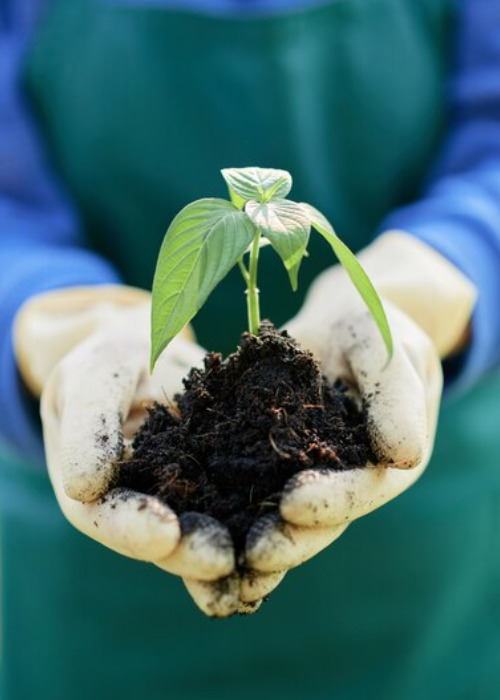
What are Bio Growth Fertilizers?
An organic fertilizer consisting of natural materials and microorganisms is called a biofertilizer. They provide numerous advantages for farmers and gardeners and are a sustainable and greener substitute for petrochemical fertilizers. In contrast to conventional fertilizers that depend on artificial chemicals, biofertilizers utilize the natural ability of plants to establish a balanced environment that promotes crop growth.
8 Benefits of Bio Growth Fertilizers
Improved Soil Health
One of the primary advantages of bio growth fertilizers is their ability to enrich soil health. These fertilizers introduce beneficial microorganisms such as bacteria, fungi, and algae into the soil. These microorganisms form symbiotic relationships with plants, aiding in nutrient absorption and enhancing soil structure. As a result, soil fertility improves over time, creating an optimal environment for plant growth.
Increased Crop Yields
Bio-fertilizers can also help to increase crop yields. By providing plants with the nutrients they need to grow and thrive, bio-fertilizers can improve plant health and productivity. In addition, the beneficial microorganisms in bio-fertilizers can help to protect plants from diseases and pests, further increasing crop yields.
Enhanced Nutrient Availability
In addition to nitrogen fixation, biofertilizers contribute to increased nutrient availability in the soil. Phosphorus-solubilizing bacteria and mycorrhizal fungi present in these fertilizers help break down complex minerals, releasing essential nutrients such as phosphorus and potassium. This enhanced nutrient availability ensures that plants receive a well-rounded diet, leading to healthier and more robust crop yields.
Reduced Environmental Impact
Perhaps one of the most compelling benefits of bio growth fertilizers is their contribution to environmental sustainability. Unlike chemical fertilizers that can leach into groundwater, causing pollution, biofertilizers leave no harmful residues. The use of these natural alternatives helps preserve water quality, protect biodiversity, and reduce the overall environmental footprint of agricultural practices.
Cost-effectiveness
Bio-fertilizers are also generally more cost-effective than synthetic fertilizers. Since they are made from natural materials, they are often less expensive to produce, and they can be applied to the soil at a lower cost. This can help to reduce the overall cost of fertilization and make it more affordable for farmers and gardeners.
Disease Suppression
Bio growth fertilizers have demonstrated remarkable capabilities in suppressing soil-borne diseases. The introduction of beneficial microorganisms competes with and inhibits the growth of harmful pathogens. This natural defense mechanism helps reduce the need for chemical pesticides, promoting a more sustainable and eco-friendly approach to pest management.
Sustainable Nutrient Fixation
Biofertilizers play a crucial role in sustainable nutrient fixation. Certain strains of bacteria found in bio growth fertilizers have the remarkable ability to fix atmospheric nitrogen into a form that plants can readily absorb. This natural nitrogen-fixing process reduces the reliance on synthetic nitrogen fertilizers, mitigating the environmental impact associated with their production and use.
Improved Water Retention
The microorganisms present in fertilisers contribute to improved soil structure, leading to enhanced water retention. This is particularly beneficial in regions prone to drought or erratic rainfall. The increased water-holding capacity of the soil ensures that plants have a steady and reliable water supply, even in challenging climatic conditions.
Nature Your Soil for Better Plant Growth!
In conclusion, the adoption of bio growth fertilizers represents a paradigm shift in modern agriculture. From nurturing soil health to promoting sustainable nutrient fixation, these natural alternatives offer a myriad of benefits that extend beyond traditional farming practices. As we continue to explore innovative and eco-friendly solutions for feeding a growing global population, biofertilizers stand as a beacon of hope for a greener, healthier, and more sustainable future in agriculture. Embracing these natural allies in the field can pave the way for a harmonious coexistence between farming and the environment.
There are numerous advantages for farmers and gardeners when using biofertilizers. Bio-fertilizers are a sustainable and environmentally responsible way to fertilize gardens and crops since they enhance soil fertility, increase crop yields, improve soil health, have a lower environmental impact, and are reasonably priced. The usage of bio-fertilizers is anticipated to increase further as demand for organic and sustainable agriculture grows, supporting the wellbeing of our soils, crops, and world. So don’t let your crop wait and buy biostimulants and plant growth regulators online today from Kisan4U.
Author Profile for Kisan4U
The author of this blog is a content writer with Kisan4U, a one-destination online shop for all your plant’s needs. Kisan4U sells organic plant and flower booster nutrients such as fertilizers, micronutrients, PGR, and Pesticides, among others. So if you are looking to buy organic crop protection products online, Kisan4U is the best place to do so because we offer most organic products at the most reasonable prices.
#organic fertilizer online shopping#best organic micronutrient fertilizers#buy organic fertilizer online india#flower booster organic fertilizer#micronutrients fertilizer for plants
0 notes
Text
#gardening#home#flowers#nature#plants#organic fertilizer equipment#organic fertilizer granulator#organic
0 notes
Text
Impello Bio: Discover the Best Organic Fertilizer for Flowering Plants
Impello Bio offers the ultimate solution for gardening enthusiasts with our best organic fertilizer for flowering plants. Our scientifically formulated blend is designed to nourish and promote vibrant blooms. Say goodbye to synthetic chemicals and embrace eco-friendly, bountiful gardens with Impello Bio's organic fertilizers. Grow beautiful, healthy flowers naturally with our trusted brand. Explore the best organic fertilizer for your flowering plants today!
0 notes
Text
Nawóz granulowany do róż 🌹
Zadbaj o Swoje kwiaty z Naszym nawozem granulowanym do róż. Nasz produkt utrzyma stadium kwitnięcia Twoich przepięknych roślin i nada im przepięknego i magicznego wyglądu.🤩👌
Przy zakupie naszego nawozu dostaniesz również eliksir do storczyków za darmo.🌼💧
Więcej akcesori do Twoich kwiatów znajdziesz na Naszej stronie internetowej 🌐 sklepinternetowypl.com
#flowers#kwiaty#kwiatek#róże#rose#plants#rosliny#rośliny#organic fertilizer equipment#nawóz#polska#poland#biznes#business
0 notes
Text
Allamanda plant
The Allamanda plant is an evergreen perennial flowering plant that belongs to the family Apocynaceae. They are indigenous to America. Some varieties of allamanda yields colorful flowers. Many varieties of allamanda produce yellow flowers and few varieties of allamanda produce pink flowers. Allamanda plant usually grows up to 20 feet. Allamanda plants are classified based on their stem position such as creeper, climbers, and shrubs. It is used for traditional medicines to treat jaundice, malaria, and liver tumors.

Allamanda varieties
Majorly two varieties of Allamanda are throughout the world.
Allamanda cathartica:
Allamanda cathartica is has another name called a golden trumpet. This variety produces dark yellow flowers. And this plant grows up to 15 feet tall.
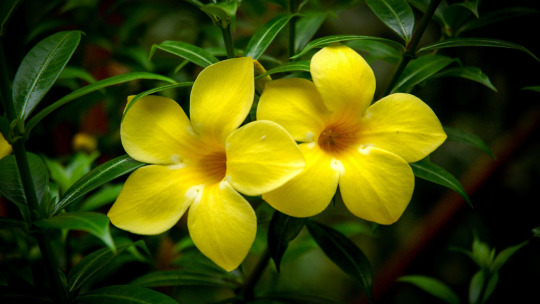
Allamanda blanchetti
Allamanda blanchetti is also known as purple allamanda. This variety produces a deep purple flower. And this plant grows up to 10 feet tall.
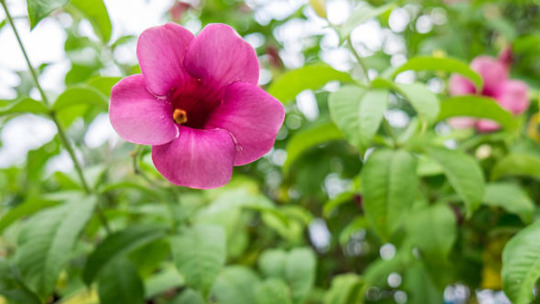
How to grow allamanda plant
Allamanda shrub and allamanda creeper both are propagated through stem cuttings. Initially choose a healthy matured mother plant and cut below the leaf node. While transplanting remove all the leaves from the bottom portion of the stem and leave two couple of leaves at the apical portion and place them in a pot. After 3-5 weeks roots start to generate.

Soil
Allamanda survives in sandy loam soil. Excess water logging is not good for allamanda creepers. So, the PH range of soil should remain between 6.0 to 7.0. Induce the soil with organic matters like cow manure, and goat manure which provides additional nutrients to the plant. And mulching above the soil to maintain its moisture level.
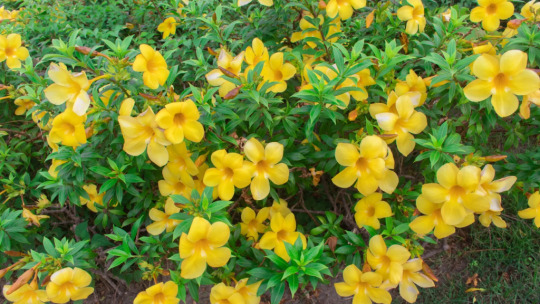
Flower
Allamanda creepers produce funnel-shaped flowers with five overlapped petals that spread outwards. There are a few varieties such as allamanda cream, allamanda chocolate, and allamanda Indonesia sunset. And popular varieties of allamanda flowers are allamanda cathartica and allamanda blanchetti.
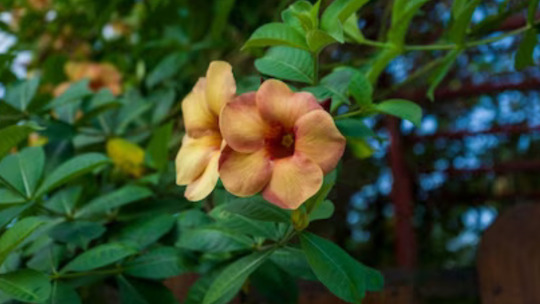
Fertilizers
Give NPK fertilizer at proper ratio in the gap of 2-4 weeks. fertilizer is given at the base of the plants.
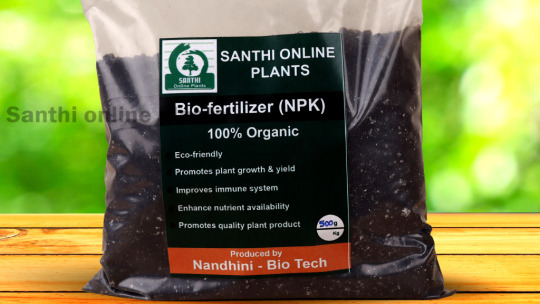
Pruning
Early spring is better for pruning just before new growth begins. To maintain overall health and appearance pruning is an essential thing that removes all diseased, dead, and damaged branches.
Usually, allamanda grows vigorously so, prune it according to your desired size.

Choose green go wild
Blog created by: www.santhionlineplants.com
#Soil#Allamanda survives in sandy loam soil. Excess water logging is not good for allamanda creepers. So#the PH range of soil should remain between 6.0 to 7.0. Induce the soil with organic matters like cow manure#and goat manure which provides additional nutrients to the plant. And mulching above the soil to maintain its moisture level.#allamanda plant#Water#Allamanda creeper required a minimum amount of water to survive. At the same time#allamanda is intolerant to excessive water. Watering twice a week is enough for Allamanda.#allamanda creeper#Sunlight#Allamanda plants survive in full sunlight. Allamanda flower need minimum six hours of sunligt. Ample amount of sunlight is need for proper#allamanda cathartica#Flower#Allamanda creepers produce funnel-shaped flowers with five overlapped petals that spread outwards. There are a few varieties such as allama#allamanda chocolate#and allamanda Indonesia sunset. And popular varieties of allamanda flowers are allamanda cathartica and allamanda blanchetti.#alamanda flower#Fertilizers#Give NPK fertilizer at proper ratio in the gap of 2-4 weeks. fertilizer is given at the base of the plants.#alamanda creeper fertilizer#Pruning#Early spring is better for pruning just before new growth begins. To maintain overall health and appearance pruning is an essential thing t#dead#and damaged branches.#Usually#allamanda grows vigorously so#prune it according to your desired size.#allamanda blanchetti plant pruning#Repotting#Repot the allamanda before its active growth begins. Choose a well-drained potting mix that is suitable for allamanda. After repotting wate
1 note
·
View note
Text
Allamanda plant
The Allamanda plant is an evergreen perennial flowering plant that belongs to the family Apocynaceae. They are indigenous to America. Some varieties of allamanda yields colorful flowers. Many varieties of allamanda produce yellow flowers and few varieties of allamanda produce pink flowers. Allamanda plant usually grows up to 20 feet. Allamanda plants are classified based on their stem position such as creeper, climbers, and shrubs. It is used for traditional medicines to treat jaundice, malaria, and liver tumors.

Allamanda varieties
Majorly two varieties of Allamanda are throughout the world.
Allamanda cathartica:
Allamanda cathartica is has another name called a golden trumpet. This variety produces dark yellow flowers. And this plant grows up to 15 feet tall.
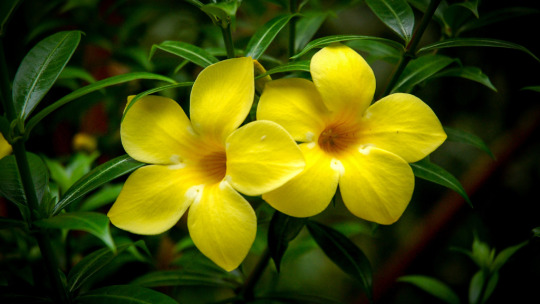
How to grow allamanda plant
Allamanda shrub and allamanda creeper both are propagated through stem cuttings. Initially choose a healthy matured mother plant and cut below the leaf node. While transplanting remove all the leaves from the bottom portion of the stem and leave two couple of leaves at the apical portion and place them in a pot. After 3-5 weeks roots start to generate.
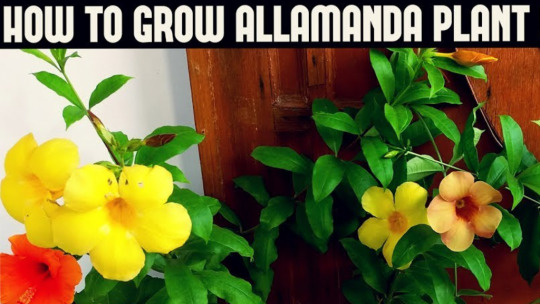
Soil
Allamanda survives in sandy loam soil. Excess water logging is not good for allamanda creepers. So, the PH range of soil should remain between 6.0 to 7.0. Induce the soil with organic matters like cow manure, and goat manure which provides additional nutrients to the plant. And mulching above the soil to maintain its moisture level.
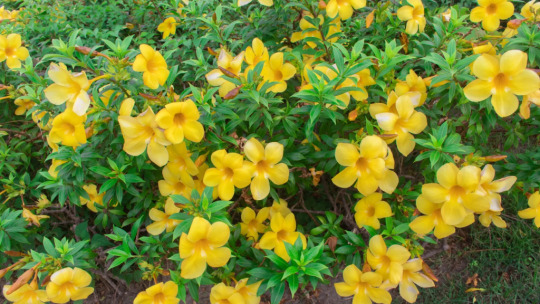
Flower
Allamanda creepers produce funnel-shaped flowers with five overlapped petals that spread outwards. There are a few varieties such as allamanda cream, allamanda chocolate, and allamanda Indonesia sunset. And popular varieties of allamanda flowers are allamanda cathartica and allamanda blanchetti.
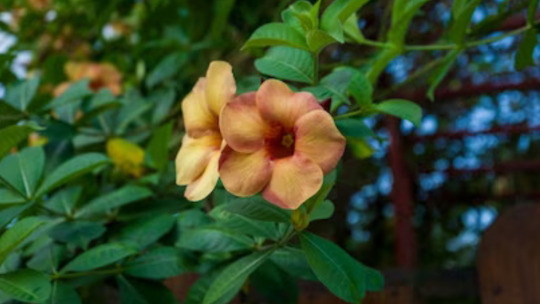
Fertilizers
Give NPK fertilizer at proper ratio in the gap of 2-4 weeks. fertilizer is given at the base of the plants.
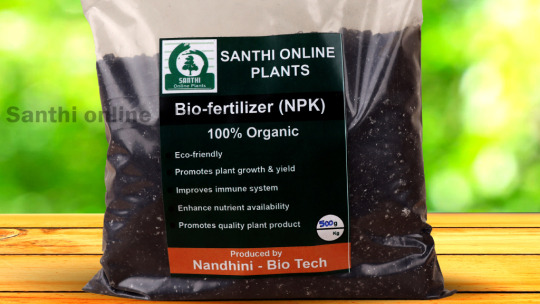
Pruning
Early spring is better for pruning just before new growth begins. To maintain overall health and appearance pruning is an essential thing that removes all diseased, dead, and damaged branches.
Usually, allamanda grows vigorously so, prune it according to your desired size.

Repotting
Repot the allamanda before its active growth begins. Choose a well-drained potting mix that is suitable for allamanda. After repotting water thoroughly until the water drains. The repotted allamanda placement done in indirect sunlight. Because direct sunlight can affect plant growth. So, inspect the plant's signs regularly.
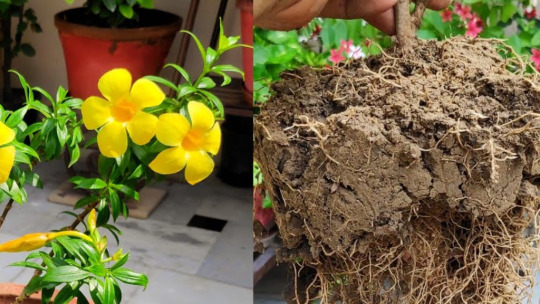
#Allamanda survives in sandy loam soil. Excess water logging is not good for allamanda creepers. So#the PH range of soil should remain between 6.0 to 7.0. Induce the soil with organic matters like cow manure#and goat manure which provides additional nutrients to the plant. And mulching above the soil to maintain its moisture level.#allamanda plant#Water#Allamanda creeper required a minimum amount of water to survive. At the same time#allamanda is intolerant to excessive water. Watering twice a week is enough for Allamanda.#allamanda creeper#Sunlight#Allamanda plants survive in full sunlight. Allamanda flower need minimum six hours of sunligt. Ample amount of sunlight is need for proper#allamanda cathartica#Flower#Allamanda creepers produce funnel-shaped flowers with five overlapped petals that spread outwards. There are a few varieties such as allama#allamanda chocolate#and allamanda Indonesia sunset. And popular varieties of allamanda flowers are allamanda cathartica and allamanda blanchetti.#alamanda flower#Fertilizers#Give NPK fertilizer at proper ratio in the gap of 2-4 weeks. fertilizer is given at the base of the plants.#alamanda creeper fertilizer#Pruning#Early spring is better for pruning just before new growth begins. To maintain overall health and appearance pruning is an essential thing t#dead#and damaged branches.#Usually#allamanda grows vigorously so#prune it according to your desired size.#allamanda blanchetti plant pruning#Repotting#Repot the allamanda before its active growth begins. Choose a well-drained potting mix that is suitable for allamanda. After repotting wate#inspect the plant's signs regularly.
0 notes
Text
Allamanda plant
The Allamanda plant is an evergreen perennial flowering plant that belongs to the family Apocynaceae. They are indigenous to America. Some varieties of allamanda yields colorful flowers. Many varieties of allamanda produce yellow flowers and few varieties of allamanda produce pink flowers. Allamanda plant usually grows up to 20 feet. Allamanda plants are classified based on their stem position such as creeper, climbers, and shrubs. It is used for traditional medicines to treat jaundice, malaria, and liver tumors.
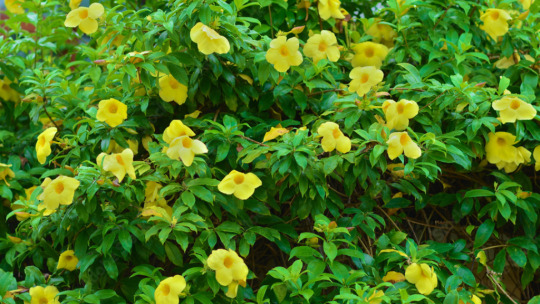
Allamanda varieties
Majorly two varieties of Allamanda are throughout the world.
Allamanda cathartica:
Allamanda cathartica is has another name called a golden trumpet. This variety produces dark yellow flowers. And this plant grows up to 15 feet tall.
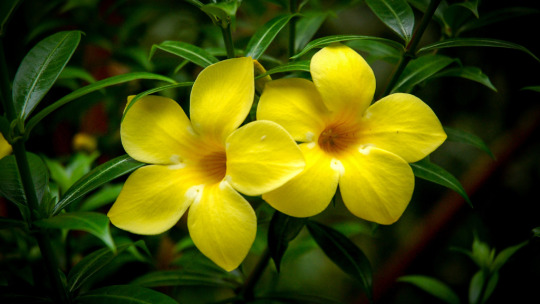
Allamanda blanchetti
Allamanda blanchetti is also known as purple allamanda. This variety produces a deep purple flower. And this plant grows up to 10 feet tall.
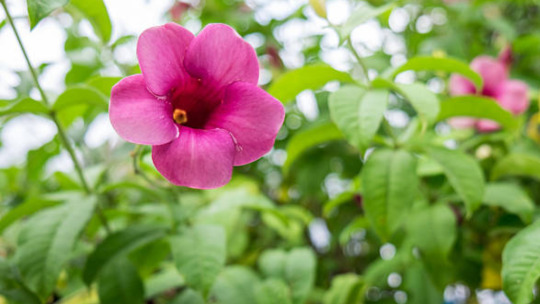
How to grow allamanda plant
Allamanda shrub and allamanda creeper both are propagated through stem cuttings. Initially choose a healthy matured mother plant and cut below the leaf node. While transplanting remove all the leaves from the bottom portion of the stem and leave two couple of leaves at the apical portion and place them in a pot. After 3-5 weeks roots start to generate
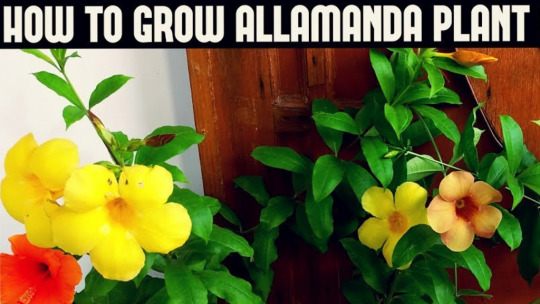
Soil
Allamanda survives in sandy loam soil. Excess water logging is not good for allamanda creepers. So, the PH range of soil should remain between 6.0 to 7.0. Induce the soil with organic matters like cow manure, and goat manure which provides additional nutrients to the plant. And mulching above the soil to maintain its moisture level.
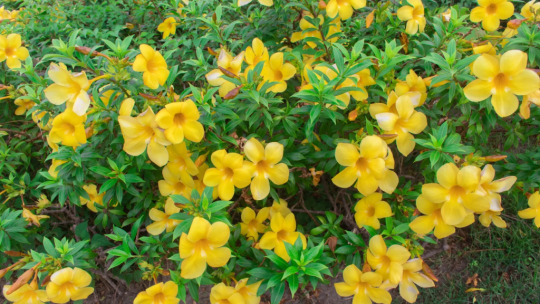
Water
Allamanda creeper required a minimum amount of water to survive. At the same time, allamanda is intolerant to excessive water. Watering twice a week is enough for Allamanda.

Benefits of allamanda
Allamanda blanchetti are praised for colorful shades and trumpet shape.
Allamanda flower attracts pollinators which promotes a healthy ecosystem.
In traditional medicine, many parts of allamanda are used for various purposes. Allamanda is highly used to treat skin infections, fever, and certain stomach issues.
Allamanda flower possesses some anti-inflammatory properties which reduce inflammation.
Plants play a vital role in purifying the air, providing oxygen and it creates a healthier ecosystem.
Allamanda-flower plant
Choose green go wild
Blog created by: www.santhionlineplants.com
#Soil#Allamanda survives in sandy loam soil. Excess water logging is not good for allamanda creepers. So#the PH range of soil should remain between 6.0 to 7.0. Induce the soil with organic matters like cow manure#and goat manure which provides additional nutrients to the plant. And mulching above the soil to maintain its moisture level.#allamanda plant#Water#Allamanda creeper required a minimum amount of water to survive. At the same time#allamanda is intolerant to excessive water. Watering twice a week is enough for Allamanda.#allamanda creeper#Sunlight#Allamanda plants survive in full sunlight. Allamanda flower need minimum six hours of sunligt. Ample amount of sunlight is need for proper#allamanda cathartica#Flower#Allamanda creepers produce funnel-shaped flowers with five overlapped petals that spread outwards. There are a few varieties such as allama#allamanda chocolate#and allamanda Indonesia sunset. And popular varieties of allamanda flowers are allamanda cathartica and allamanda blanchetti.#alamanda flower#Fertilizers#Give NPK fertilizer at proper ratio in the gap of 2-4 weeks. fertilizer is given at the base of the plants.#alamanda creeper fertilizer#Pruning#Early spring is better for pruning just before new growth begins. To maintain overall health and appearance pruning is an essential thing t#dead#and damaged branches.#Usually#allamanda grows vigorously so#prune it according to your desired size.#allamanda blanchetti plant pruning#Repotting#Repot the allamanda before its active growth begins. Choose a well-drained potting mix that is suitable for allamanda. After repotting wate
0 notes
Text
Fuchsia, A Gardeners Guide to Growing and Caring.
Dive into the fascinating world of Fuchsia. This blog shares personal anecdotes from the heart of a gardener, weaving together history, care tips, and horticultural adventures. Join us in celebrating these flamboyant blooms.
Do you know what it feels like to see a beautiful flower bud unfurling into vibrant shades of pinks and purples in your very own garden? Allow me to transport you into the magnificent world of Fuchsia, the ballet dancers of the plant kingdom, twirling their colourful skirts, unfazed by the world around them. I was once just like many of you – a fuchsia novice, enticed by their vivid allure, yet…

View On WordPress
#Blooming Flowers#Botany#companion planting#edible gardening#fertilizer#Flower Gardens#Fuchsia#Fuchsia History#Garden design#Garden Stories#gardening#Gardening Challenges#Gardening Tips.#harvesting#home gardening#horticulture#Indoor gardening#organic gardening#ornamental plants#outdoor gardening#Personal Experiences#pests and diseases#plant care#plant nutrition#plant propagation#soil quality#storage#sunlight#sustainable gardening#Watering plants
0 notes
Text
nature things that a lot of people don't know about and weren't even taught about adequately, but they're actually really fundamental and important to know about
how rivers work. Where do they get started? how do they decide which way to flow?? what makes one river muddy and the other one clear?
[They flow downhill. Always. If a river is flowing a Way, that way is Downhill. They start with rain flowing or soaking downhill until it forms into a little trickle through a channel like a gully or drainage ditch, and the farther it flows the more other trickles flow into it from the land around it, until you have a stream, and the streams all flow downhill until they run into each other, and eventually you have a river which finally reaches the ocean. Rivers never flow FROM the ocean because the ocean is the most downhill you can possibly go. I don't think rivers usually split in two—a fork in a waterway is usually two rivers joining together.]
[On the subject of pollution, rain is usually supposed to soak slowly through the layer of leaves, roots, and dead plant material that covers most biomes. But if you tear up the plants and leave bare mud, or replace a forest with a muddy cow pasture, there's no filter, and mud and contaminants wash into the river. Just plain mud can be pollution.]
how soil works. What makes different soils different? Why are some soils good for growing a garden and others terrible? Does it need more fertilizer?
[The sand, silt, clay diagram is very simplified and only deals with one aspect of soil. Roots, soil animals, fungi, and dead plant material are all part of soil and affect its structure, making it spongy and full of holes and passages for nutrients, water, and new roots. Tilling can break hard soil, but tilling doesn't make soil light, fluffy, and permeable—disturbing the soil as little as possible, protecting it with a layer of plant material, and allowing the natural life forms of the soil develop their networks and tunnels and slowly break down the plant material layer does. This is also very simplified. Soil is COMPLICATED.]
what fungi are, and whether they are dangerous.
[fungi cannot harm you unless you eat them or unless they're growing inside your house and you're inhaling their spores in a concentrated space. There's like, one species in Japan that causes skin irritation. You can touch any other species without any harm whatsoever. *Most* of them don't harm your garden either—in fact, most plants connect their root systems to the fungal mycelium in the soil and receive nutrients from the fungus in exchange for the products of photosynthesis.]
Whether lichen harm trees
[no. They're just hanging out. But a LOT of lichen on a tree might be a sign that the tree is dying. It's not the lichen's fault though.]
What moss is??
[it's a plant, but a very simple plant that doesn't have any vessels for transporting water, so it has to live somewhere damp and soak it up like a sponge. There are hundreds of species of moss, and different species live on the side of a boulder vs. the top, or a living tree trunk vs. a fallen dead tree trunk!]
where bugs go in the winter? I straight up had a book as a kid that told me that they just die, without explaining how the species doesn't go extinct if the winter kills them all.
[Tl;dr they're usually hibernating in fallen leaves and dead wood and plant material. Some do this as eggs or larvae/caterpillars; in this case the adults do die, but their children sleep peacefully through the winter to awake in the spring. And still others hibernate as adults. This is why you don't clean up your flower beds until late spring.]
How Many plants there are
[WAY more than you think]
How ecosystems work apart from "everything is out to get everything else and take resources from other organisms."
[Competition and cooperation are both important in ecosystems! Weeds are competitive and they can choke out other plants, but they also protect the soil from erosion and harsh sunlight, keeping it moist and helping organic matter to build up. A lot of plants, when they're young, need to be sheltered by other plants that protect them from dryness, heat, and herbivores. This isn't even getting into how some plants will send nutrients to seedlings or to understory plants in a forest! Before industrial agriculture made monocultures dominant, people used and were familiar with cooperative relationships between plants a LOT more.]
The range of creatures that are pollinators, and how important the variety is.
[Bees, wasps, butterflies, moths, flies, ants, beetles, hummingbirds, and bats are all pollinators, and flowers are usually shaped and colored and scented to attract particular pollinators. Bees can't do everything, and honey bees are only one kind of bee. Red flowers and long tube shaped flowers are often for hummingbirds, pale-colored flowers that open at night need moths, and flowers that give off strong foul odors often attract flies. It gets WAY more complicated than that—sometimes a flower is only pollinated by a single species of bee or wasp or beetle.]
How many bees there are besides honey bees
[LOTS. And you've probably never seen most of them, if you don't regularly spend time around native plants! There are 140 species of longhorn bee alone, and most people haven't even heard of longhorn bees! There are well over a hundred bumble bees too! Bees come in bright, metallic green, blue, and pure gold. In the USA where I live, some of the most endangered bees are the adorable, fluffy bumble bees—the American Bumble Bee is threatened, and we have some species, like the rusty-patched bumble bee, that are critically endangered.]
[Please, please, please do not use pesticides on plants unless it is a necessity, and please do a LOT of research on the specific pesticide you are using and its effects on non-target insects. If there is any alternative, Do Not Do It. ESPECIALLY not pesticides that come in dust or powder form, ESPECIALLY in the USA, because regulations are so loose here that regular people can buy pesticides in dust form that are horribly toxic to bees.]
[How horribly toxic? A pesticide like Sevin dust will cling to the fuzz on every single bee that visits your plant—like pollen—and those bees will probably die. And in social bees, before they die, they will take the poison back to their hive (like pollen) and potentially kill the entire hive.]
9K notes
·
View notes
Text
It's Time for Samhain! (Oct 31- Nov 1)
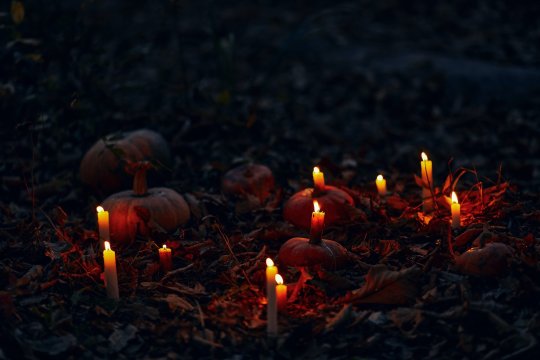
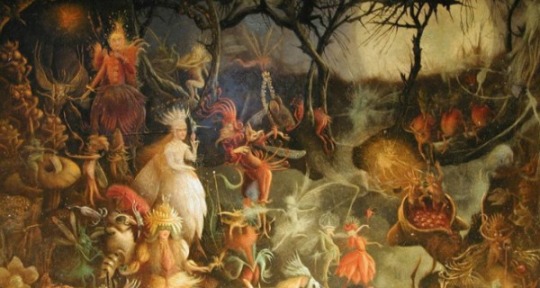
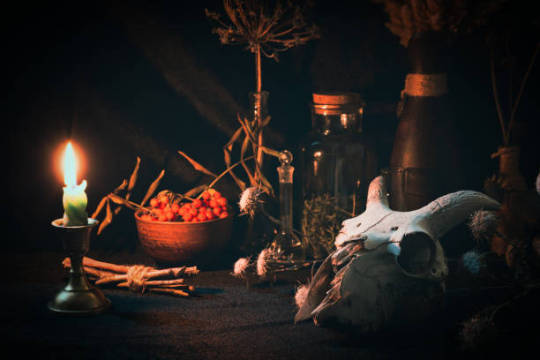
What is Samhain? In the Celtic calendar, Samhain marks the end of summer and the harvest season, and the beginning of the dark, cold winter months. It falls opposite Beltane on May 1, which represents the beginning of spring and the life-filled growing season.
It’s believed that the veil between the living and the dead is thinnest on Samhain. Historically, people were worried that they would encounter ornery spirits if they ventured outside on Samhain night, so they dressed as ghosts or wore masks to disguise themselves. Folks would leave treats on their front porch or place an extra setting at the table to welcome any friendly spirits who stopped by. You can see how these Samhain rituals easily morphed into our modern-day version of trick-or-treating in costume.
Nighttime bonfires were another of the long-standing Samhain rituals - this one was thought to help combat the impending darkness of winter and the fearful chill that accompanied the idea of roaming spirits. Because the veil between living and dead is believed to be the thinnest on this night, Samhain is also a powerful night for divination and spellcasting by candlelight.
Usual Symbols of Samhain:
Ale or Mead
Pumpkins
Skulls
Besom or Broom
Beans
Cauldron
Bats
Keys
Squash
Pomegranate
Nuts
Apples and Cider
Bones
Herbs and Plants for Samhain:
Rosemary – Associated with remembrance and is needed during this season in taking time to honor the memories of our ancestors and other lost loved ones. Can be used in an incense blend and at ancestor altar
Fall Flowers – Includes flowers like marigolds and chrysanthemums. Are associated with protection and chrysanthemums come in handy with connecting to the spirit world
Apples (the fruit, branches and blossoms) – Is considered sacred to a lot of gods. A good apple harvest means that the gods have shown the community their favor. You can use apples in different rituals, especially divination
Pomegranates – Is associated with the realm of the underworld and helps with communication with the dead. It is also associated with fertility of the fall.
Squashes, Pumpkins and Gourds – Is associated with abundance and provides sustenance for your family when the fields become bare and covered in snow. Is linked to psychic awareness and development and protection.
Mugwort – Is associated with divination and dreaming. Using Mugwort baths or incenses in the rituals can focus on treating depression, especially with the seasons changing
Rowan Trees – The branches and berries are a way to keep evil spirits out of your house and are associated with good health. If you plant a tree near a grave, it will prevent the dead from rising.
Sage – Is associated with cleansing and grounding. Is a great incense to cleanse your home to bring in the new and out with the old
Hawthorn – Has been associated with the gateway between humans and the spirit world. Is also rumored to an area where you can see fairies.
Crystals for Samhain:
Amethyst – Aids in opening one’s third eye and is valuable to be able to see Samhain’s spirits around
Black Obsidian – Is great for grounding and protect from evil spirits. Can be used in scrying when speaking to deities and spirits of Samhain
Citrine – Is used to honor the sun. Aids in prosperity spells and carries joy
Black Tourmaline – Wards off unwanted spirits from your property and can be buried into the ground to protect from psychic attacks and spirit intrusion
Orange Calcite – Orange is a sacred color to Samhain. This stone is associated with one’s sacral chakra and can cleanse and align reproductive organs, sexuality and get creativity flowing
Bloodstone – Known to heal cardiovascular illness and disease. Can help with ancestry links and work
Spirit Quartz – Is great in helping communicate with the spirits of Samhain and releasing old and toxic habits
Lepidolite – Used to appease the fairies that roam during Samhain
Serpentine – Is associated with snakes and aids in remembering past lives. Loki seems to like this stone and may be great to use for him if you work with him during this season
Dragonstone – Dragons are guardians of the earth, spirits of place, and connect us to Mother Nature. Helps say goodbye to the old years and our old selves
Skull shaped Stones – Since skulls are symbols of Samhain, skull shaped stone can help with symbolism during this holiday. They represent the life-death-rebirth cycle, wisdom and our ancestors
Spells and Rituals:
A Samhain Tea (Apple and Hawthorn Berry)
1 apple, sliced
2 Tablespoon dried hawthorn berries (or 4 Tablespoons fresh)
1 cinnamon stick
A pinch of cloves
4 cups water
Honey, to taste (optional)
Combine all ingredients in a small stockpot.
Bring to a boil, then reduce heat and simmer, covered, for 10 minutes.
Strain the plant material from the tea, then transfer the tea into two mugs.
Enjoy one for yourself, and leave the other on your table or front porch to nourish any wandering spirits who may pass while the veil between the living and the dead is thinnest.
A Pumpkin Spell for Prosperity
A pumpkin
Some paint
Go to the pumpkin patch (or local store) and select a pumpkin. Or let the pumpkin choose you.
Bring it home and paint prosperity symbols on it – money signs, runes for prosperity or harvest glyphs (whatever means prosperity to you).
Then place by your front door to invite prosperous vibes into your home this Samhain season.
Bonfire Release Purification Spell
Paper
Pen
Source of fire (bonfire, fireplace, candle flame)
Gather your materials and sit by the fire.
Take a few minutes to just listen to the fire crackling.
Gaze into the flames and connect with this powerful element.
Next begin to think about what habit or person you are releasing this Samhain. Think about why you’re purifying your life from this thing or person.
Then write the habit or person down on the piece of paper.
Fold it away from you 3 times.
Hold it in your hands and allow all of the negative thoughts and energies inside of you to “drain” out of you and into the paper.
Then throw it in the fire and say,
“After this Samhain, never again. Never again. I release _________ from my life by the power of the Samhain fire. So, mote it be.”
How to Make a Samhain Altar
Beautiful autumn leaves or flowers that you collect on a nature walk
A candle
A mugwort bundle
A string of rowan beads
A bowl of apples or a small pumpkin
A hawthorn wand or bowl of freshly picked hawthorn berries
A picture of your ancestors
To make an altar, first find a corner of your home or a table surface where you can arrange a few treasures. You don’t need a ton of space. You could use the top of a dresser, the corner of your desk, an unused side table, etc.
After you’ve assembled your altar, spend some time sitting quietly in the space. Light the candle and/or mugwort wand, sip on a cup of Apple & Hawthorn Berry Tea and meditate on this energetically powerful day.
I could find specific written instructions for a crystal grid but I found a video!
Crystal Grid for Samhain
Let's get ready for Samhain and have a great and safe time!
#witchblr#witch community#witchcraft#occultism#paganblr#green witch#nature#plants and herbs#herbalist#witchcraft 101#samhain#all hallows eve#halloween aesthetic#pagan witch#crystal witch#crystal grid#crystals#witches of tumblr#witches#spooky#pumpkin#kitchen witch#witch#witchy vibes#halloween#happy halloweeeeeeen
547 notes
·
View notes
Text
Seasonal Strategies: How Organic Liquid Fertilizers Enhance Flowering in Different Time
As the seasons change, so do the needs of our beloved plants. Gardening enthusiasts and seasoned horticulturists alike understand the importance of adapting strategies to ensure vibrant blooms year-round. One key component in achieving this botanical brilliance is the incorporation of organic liquid fertilizer for flowering plants. In this blog, we'll explore the dynamic relationship between seasonal shifts and the application of these fertilizers, unveiling the secrets to enhancing flowering in different times of the year.
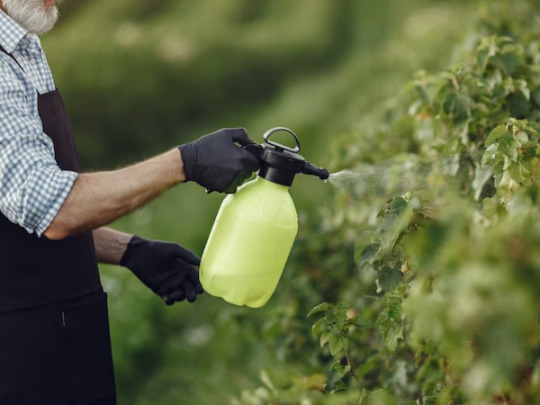
Spring Awakening: Nurturing the Bud Burst
Plants come to life as winter gives way to the revitalizing touch of spring, emerging from their dormant state. For flowers, this is a critical period as they prepare for the show of blooms that will come later. A crucial part of supplying the vital nutrients required for this first development spurt is played by organic liquid fertilizers.
In the spring, use fertilizers that have a balanced N-P-K ratio to make sure your plants get enough nitrogen (N) to grow healthy leaves, phosphorus (P) to strengthen roots, and potassium (K) to produce lots of flowers. Fish emulsion and seaweed extracts are examples of organic solutions that provide essential nutrients to the soil and encourage microbial activity, which in turn sets the stage for an amazing flower display.
Summer Splendor: Sustaining the Blossom Brilliance
When the sun rises and the temperature rises, your flowering plants go into a high-energy-use phase. It's important to modify your organic liquid fertilizer regimen in order to maintain the flowering brightness attained in the spring. Seek for formulas that are high in potassium and phosphate to support ongoing flower production.
Think about incorporating worm castings or compost tea into your regimen. These organic fertilizers improve soil structure and water retention in addition to providing vital nutrients. This dual advantage is especially helpful in the summer heat, when plants are more vulnerable to stress. You can guarantee a lengthy and colorful blooming season by fertilizing your garden with organic liquid fertilizers that are specifically formulated for summertime needs.
Fall Fortification: Preparing for the Dormant Descent
Plants transition from flowering to dormant state when the days become shorter and the temperature drops. For your plants to be resilient during the winter, you must strengthen them during this transitional period and promote root formation.
Make the switch to organic fertilizers that prioritize potassium and phosphorus to strengthen roots and increase resistance to disease. The slow-release of nutrients from bone meal and kelp extracts will reinforce your plants during the dormant season, making them great selections. By taking this calculated approach, you not only get your garden ready for winter, but you also set the stage for a successful comeback in the spring.
Winter Wisdom: Providing Subtle Sustenance
Even if it could appear like horticultural hibernation over the winter, it's important to continue taking care of your plants. Subtle nourishment can have a big impact on your garden's health and vigor, even in the winter.
Choose a liquid fertilizer that is higher in micronutrient concentration and lower in nitrogen. With this careful approach, you can be sure your plants get the nutrition they need without pushing them to develop too much and risk frost damage. Applying organic liquid fertilizers in the wintertime serves as a preventative measure and gets your plants ready for the approaching springtime revival.
Choosing the Right Formula: Tailoring Fertilization to Your Garden
Not all organic liquid fertilizers are created equal. Understanding the specific needs of your plants and tailoring your fertilizer choice accordingly is essential for success. Whether it's a nitrogen boost for leafy greens or a phosphorus-rich blend for flowering plants, selecting the right formula is the first step towards a flourishing garden.
Application Tips: Maximizing the Impact of Organic Liquid Fertilizers
The timing and method of fertilizer application are critical factors in ensuring maximum efficacy. Applying fertilizers during the plant's active growth periods, avoiding excesses, and incorporating them into a well-balanced watering routine are key practices. These considerations enhance nutrient absorption and minimize the risk of over-fertilization, promoting a healthy and vibrant garden.
A Year-Round Symphony of Blooms
In the delicate dance between seasons and the art of gardening, organic liquid fertilizers emerge as the conductor, orchestrating a year-round symphony of blooms. By understanding the unique needs of your plants during each season and tailoring your fertilizer regimen accordingly, you unlock the secrets to a flourishing and vibrant garden. Embrace the seasonal strategies, and watch as your flowers transform into a breathtaking display of nature's beauty, enriching your outdoor space with color, fragrance, and life with liquid carbon-based fertilizer.
Author Profile
The author of this blog is a content writer with Kisan4U, a one-destination online shop for all your plant’s needs. Kisan4U sells organic plant and flower booster nutrients such as fertilizers, micronutrients, PGR, and Pesticides, among others. So if you are looking to buy plant food organic liquid fertilizer, Kisan4U is the best place to do so because we offer most organic products at the most reasonable prices.
#organic fertilizer online shopping#best organic micronutrient fertilizers#buy organic fertilizer online india#flower booster organic fertilizer#micronutrients fertilizer for plants
0 notes
Text
GR96
@fusionspruntcityjournal

So how do you produce electricity with living plants? Simply by using the natural processes that already occur. In short: the plant produces organic matter via photosynthesis. Only part of this organic matter is then used for its own growth. The rest is excreted via the roots. Around the roots, bacteria feed on the organic matter and they release electrons. If you’re able to harvest the electrons into an electrode, you can couple the first electrode to a counter-electrode and build an electrical circuit, like in a battery. The electrons flow back into the natural system via the counter-electrode, so it’s completely circular. Because we use the natural processes around the plant, nature is not harmed. It works day and night, summer and winter. It only stops when the plant and its surroundings completely dry up or freeze over.
Sedum Oviferum
Sedum pachyphyllum is a ground-hugging succulent that spreads by rooting fallen stems and leaves. The succulent also goes by the names “Cerise Moonstones” or “Mauve Pebbles”. The short and stumpy round leaves have a light silvery-purple color; positioned at a right angles to the stem and curve upward, which in the wintertime, the tips of said leaves will turn into a notorious red.
Sedum Oviferum is a succulent that is very easy to grow and maintain. It is a resilient plant that can tolerate drought, moist and dry soils, and when given adequate exposure to sunlight and sufficient water, Cerise Moonstones will thrive outdoors. The Sedum Oviferum succulent grows at its best with regular exposure to sunlight. If Mauve Pebbles are planted in an area in a garden that gets plenty of sunlight per day, you will be rewarded with bright coloured leaves and flowers. In winter and early spring, Cerise Moonstones actively grow and produce blooms featuring red-orange petals and sepals that have the same pigmentation as the leaves. The flowers produced by Cerise Moonstones have a bell shape and a sugary fragrance.
Subterranean Clover
Trifolium subterraneum is also known as the subterranean clover (often shortened to sub clover), or subterranean trefoil. The plant's name comes from its underground seed development, a characteristic not possessed by other clovers. It can thrive in poor-quality soil where other clovers cannot survive.
This species is self-fertilizing, unlike most legume forage crops such as alfalfa and other clovers, which are pollinated by insects, especially honeybees. It is also grown in places where the extreme ranges of soil type and quality, rainfall, and temperature make the variable tolerances of sub clover especially useful.
Functionality
GR96 are powered by any plant of choosing on their back pod (the one we are going to discuss has a giant Sedum Oviferum and multiple sub clovers to operate) which is held in place by five strong suction cups. They’re manufactured for community gardens (strictly only one per garden), but they can also be bought by high class citizens for private properties, though at a way bigger cost since they’re financed by the city.
They can use their hands as scissors, shovels, and for watering (hence the big forearms, for storing the water), the latter which they do by dipping their hands in a bucket, opening the valve on their forearms so they can fill them up and releasing the water from the pinholes on their palms. Their “eyes” are actually a screen that can show plenty expressions, but the two circles above that peripheral screen are the real environmental sensors. They also have the same sensors on their ankles for inspecting the lower plants and ground without the need of kneeling, and their feet are shaped in a way so that weight is evenly distributed, lowering the chances of damaging a plant if they were to step on it. The ear like protrusions are small solar panels, used as backup energy (they don’t have any communication properties). Their speaker aka their “voice” is the mohawk-like structure on the top (which also has their series barcode 128 on the lower back), but when they speak there are these strips at the sides of the face mask that light up with the volume. The mask (non removable) has a set of pipes that are used for analyzing the air quality and humidity of the area surrounding them.
#my art#fusionsprunt#fusionsprunt oc#fusionsprunt clover#i’ll reblog this again later with their lore and alt design#the sedum oviferum is a fictional succulent i came up with since i couldn’t find one that i liked lmao#literally said fuck it it’s my oc i make the rules#[slaps a giant plant inside]#the energy gathering segment is based on a real article!#in its current state it can only power small leds#but i like to imagine a future where that energy could power full fledged robots :0
175 notes
·
View notes
Text
Uniwersalne pałeczki nawozowe do roślin doniczkowych 30 szt.🌼🌷
Zadbamy o Twoje rośliny Dzięki unikalnej formule VITAL ACTIVE Nasze pałeczki nawozowe zapewnią dla Twoich roślin zdrowy rozwój i przepiękny wygląd.🤩👌
Łatwa aplikacja nawozu w formie pałeczek, wystarczy wcisnąć w ziemię, każda z pałeczek działa aż 2 miesiące.🤯💪
Więcej produktów dla roślin znajdziesz na naszej stronie internetowej🌐 sklepinternetowypl.com
#poland#polska#biznes#nature#business#flowers#plants#rośliny#kwiaty#organic fertilizer equipment#fertilization#ogród#ogródek#ogrody#garden
0 notes
Text
Gardening makes me feel so powerful. I can, with my own hands and careful usage of my brain, affect the environment so an area is populated by plants that I desire to be there, which will give me so much food I will be safe and secure for the entire year? I can change an area so it feeds me? By putting my hands in the soil and knowing how to anticipate the rain and where the roots are likely to grow and how long it takes to get a seed to fruition? I can do this with minimal effort and by adding organic matter to an area that will stop all other plants from growing, and fertilize my plants, so only my plants succeed? I can, on top of that, have all kinds of flowers growing in it, making it beautiful to me and helping all kinds of little bugs and critters have a home? I can do it in a way that makes the land even more fertile and healthy? And I'm not some sort of a deity?
Being able to control an area of land and make it into what you need to survive is powerful. Seeing it in your head and then watching it happen by the work of your own two hands is invigorating. Some things we cannot change. But we can change the area immediately around us so it both feeds us, and become beautiful and rich to us.
#gardening#no dig garden#no till garden#mulching#organic gardening#regenerative gardening#i love gardening#slugs have a few things to say about it tho lol
164 notes
·
View notes
Text
Truss
Woohoo Malleus woohoo! I'm making the trigger list a bit bigger because I keep thinking about how people will totally skip reading it if it's too small and then blame the writer for their own mistake. That shit is clown behavior but I don't want to be held responsible for someone else's case of stupid, so sorry to those of you who think this looks clunky. Line divider found here: @/cafekitsune. This is also a fic that is wildly self-indulgent, in that I mean that while writing I visualized my own physical form and quirks.
That being said, this fic is written with afab (assigned female at birth) readers in mind. No pronouns other than you are used for the reader, but the reader does possess a womb. Reader's chest is not described in the least, just the lower bits, and even then it's not at length. Malleus also refers to the reader as "beauty," but masculine people can be beautiful too so idk but here's a warning anyways.
This fic is DEAD DOVE, DO NOT EAT. TW for noncon, fae interaction rules used for said noncon, slight bullying if you squint, one (1) mention of blood (I'm beginning to think I have a problem.) Stay safe while reading. Possible OOC Malleus, I haven't read any of book 7 and if you spoil it I'll block you temporarily.



This is absolutely not your fault, and you don’t know what the fuck you’re doing. It’s awful. Crewel was for sure his namesake, because this whole thing was a steaming pile of-
Alright, from the top, just to organize your thoughts: you are the only non-magic student in a school of mages. The teachers are mages. Your best friend/roommate/monster friend is a mage. The plants here can do magic, but you? No. Thanks homeworld. Love the gift of nothing.
Thus, the faculty have seemingly created a game of “how to piss off and challenge the magicless student,” in which they give you various tasks to just make you lose sleep. Vargas had you running laps until your legs felt like jelly, doing pushups until your shoulders started sounding like glowsticks. Trein had you learning completely off the wall trivia, such as what type of fabric the Queen of Heart’s favorite bathrobe was made of and why it made her more powerful. That’s nothing, it’s easy because you apparently have so much free time in their eyes. But Crewel? Fuck that man.
When you got the assignment, it sounded fun and exciting. He gave you seeds for a fast-growing rose thing. Honestly you weren’t paying attention to the name of it, but you retained what you needed to know. The plant only grew in moonlight, so you needed to cover it before you went inside at night. It needed a minimum of two hours of moonlight to grow per night. If the basket was overturned and it was exposed to the sun, then the plants would die. Moderate watering, no fertilizer, the usual.
Once the plants bloomed, you were supposed to take the flowers and make some kind of glamour potion, so here you are, failing at doing so. You only had four flowers, and you’re down to the last one. You wasted three tries and you still have no idea what the hell you’re doing wrong and it’s due next alchemy class and you’re breaking curfew on top of all of it. You glare into your cauldron with your latest failed attempt and hunker down to shoulder against the side so you can dump it out and try again.
“Oh, it’s you.”
The voice makes you jump out of your skin. You turn around and you almost want to cry tears of joy, because if anyone can help you, it’s him.
“When I saw a little head duck down, I thought that something strange was happening. A crime, perhaps.” Malleus smiles, and it’s not a kind smile, but you’ll take anything remotely positive at this point, “What are you doing on the floor, child of man?”
“Oh, I have to empty the cauldron.” You puff out, still trying to throw your weight to push the cauldron. You did it twice earlier, so this must be the effects of mental and physical fatigue.
“Oh, that’s right. Allow me.” Rather than waving a hand or anything, Malleus strolls on over and uncrosses his arms, taking one hand and pressing his fingertips against the lip of the cauldron. The whole damn thing tips, the failed mixture pouring out into the nearby drain. With the same ease, he tilts it back and turns to you.
When he looks at you, it’s… weird. You know he’s lizard-like, as dragons evidently are, but even Sebek’s eyes aren’t this jarring. They aren’t soulless or cold or unfeeling, but it feels like he is looking through you. His emotions don’t reflect in his eyes properly. That’s what it feels like. They reflect, but it’s wrong. Fractured. His lips quirk into a smile and you blink.
“Uh… wait, what are you doing out here, Tsunotaro?” You ask, turning to gather more materials, following the transcript of your recording from class.
His smile grows, “Just on a walk. Will you tell me what you’re trying to make?”
“Uh, yeah. This glamour potion? I don’t know. Remember how I was growing those flowers?”
“Of course. And what happened to the rest?”
“I… uh… I messed up the other potions. I don’t know what I’m doing wrong here.”
“No?”
“No. Do… do you think you could maybe… help me?”
“Of course.” Malleus plucks the flower up, twirling it thoughtfully, “Why don’t you gather the other ingredients?”
That was simple enough. Petals from your tediously grown blooms, some kind of floral oil with tiny white flowers inked on the label, a ball of clay no bigger than a pea, something that really resembled a severed finger, something that was hopefully just someone’s baby tooth, a handful of crystals in a rainbow of colors, and water. Lots of water. Malleus watches as you put all your ingredients on the nearby table and hums thoughtfully before dimming the lights and turning back to you.
“And where did you hear that you needed these things?” He asks. It’s not something that he says with any indication that you’re right or wrong. The tone is bland but the words say enough.
He has essentially told you before that he believes you inept, a babe in the woods when it comes to this sort of thing, but it doesn’t stop you from looking as hurt as you feel, “The headmage visited class and gave me some pointers?”
“You personally or the entire class? I don’t personally recall concocting anything like this when I was in your grade.” He says.
You suppose you’re grateful that he’s so blunt, but his flat tone makes the sting of your failure that much sharper. You thought he’d be nicer, since you two are sort of friends, and Lilia has told you that Malleus is fond of you, but it also makes just as much sense for him to refrain from easing up in his flatness because he supposedly thinks so much of you. He thinks you’re an idiot, but he’s not willing to treat you as such.
“The whole class. And no one else in my grade is doing this.” You mutter, staring at your assortment of items on the table.
He approaches the table and plucks up the beaker of water, twisting it in his hand, “Did you distill this?”
“What?”
“Tap water often has various minerals in it. If you haven’t been using distilled water, you’ve been adding an extra ingredient. Typically, most potions are much more forgiving and you can use tap water with little issue, but this particular potion is known to be disagreeable.” He murmurs, crossing the room with your beaker of water and setting it up to distill with a practiced ease. “That’s why it’s typically saved for fourth year students’ aptitude testing.”
The revelation hit you like a ton of bricks. You’d like to protest but it unfortunately makes sense. Malleus looks over at you, somewhat blandly, then turns around to face you, looking half concerned.
You answer his question before he can ask, “I didn’t… know that. I guess it’s my fault for being from a different world…”
His lips twitch into a smile, and for a moment you can see amusement in his eyes, fractured with the underlying coldness, “Oh, it isn’t. It may be your fault for failing to ask questions, but having someone who is unused to this type of work take on an advanced project is cruel.”
“You think so?” You ask, voice lilting with hope.
“Of course I do. Why you’re expected to make a potion of this caliber is beyond me.” Malleus states blankly.
“Uh, yeah. I- I don’t know either. But thank you for helping me!”
His expression flinches. It lasts for less than a second before it smooths into an odd grin. You’re not quite sure what that means, but you’re too happy to stop and think about it. The water finishes distilling and you carefully begin crafting, using the tips Malleus occasionally mumbles towards you. Don’t put that ingredient in yet, stir clockwise, you need to grind that up with the oil, don’t rush you have time, et cetera, et cetera, and then you have a gorgeous violet mixture, glimmering with a pearlescent golden sheen.
Your jaw drops. Somehow the few ingredients you threw together is enough to fill several bottles. Malleus is making a smug face as you rush to the shelves of empty bottles and choose several fluted bottles, quickly using a ladle to deposit the final, successful potion into the bottles. You’re so giddy with your success that you hardly notice as Malleus walks towards the door and locks it. But only hardly.
“What was that for?” You ask, not actually caring. You’re too happy to be worried.
“Oh, we’ll need privacy.” He responds.
That part confuses you enough into caring. You turn around from where you’ve safely wrapped the bottles and slipped them into your bag and shoot Malleus a frown, “Privacy? For what?”
Malleus doesn’t say anything. He walks over to the table and you feel your body stand up, void of your control, and stagger over to stand in front of him. If you were concerned before, you’re frightened now. Malleus looks down at you with his strange gaze and folds his arms.
“Wh-what’s happening?! Why can’t I move?”
“You really don’t know?” He asks. Something about his tone sounds mocking, but you’re certain he doesn’t mean it to be. It’s his version of sarcasm, he’s spoken to you like this before.
Your body hops up on the table, taking a seat, and Malleus turns to stand before you, looking down at you with a soft smile. You shift your hips- what the fuck is going on- and Malleus very gently hooks his hands in the pants of your dorm uniform.
Your dorm uniform is legit whatever the hell you want it to be, so it would change on the daily. Today it was a pair of jeans and a hooded jacket. He kneels to remove your shoes and stands back up, leaning close as he tilts your chin up. His breath fans over your lips.
“You didn’t tell me that you were so lovely beneath your clothes.” His hand on your chin shifted to your cheek, and his other hand laid flat on the table. “And… your smell is much stronger. Are you aroused?”
“You can’t just ask me that! I don’t know what you did but you’ve got to let me go.”
“I didn’t do anything. This is your doing.” He retorts, pecking your lips very chastely.
“What are you talking about?” When he didn’t respond, instead pressing the tips of his hand that was on the table against your exposed sex, your heart jumps but your body doesn’t move. You can’t, “Don’t do that!”
“Lilia informed me that making someone climax is similar to binding someone to you.” He mumbles, kissing you again as his fingers slowly slip inside. “It makes them fall in love with you. Isn’t that the most binding contract of all?”
You don’t know why he isn’t listening, but even less than that, you don’t know why he thought you could handle two fingers, much larger than your own, penetrating you. You squeal, but your body is incapable of tensing. Malleus pulls back, looking at you in a soft confusion.
“What’s the matter with you?”
“With me? What’s wrong with you? That’s too many- it’s uncomfortable!”
He blinks at you and withdraws a finger, which feels much better. You sigh. If you’re going to be forced to do this, you may as well not get hurt in the process. You close your eyes and Malleus hums.
“Is this better? You’ll have to forgive me. I haven’t had a dalliance with a human before.”
“I- I don’t think I’ll be able to… to forgive you for this.”
“No?” You can hear his smirk and the squelching noise as he pumps his finger gets louder. He slips the second finger in again and the burn isn’t so bad as last time, “Well, maybe you can decide that for certain after the wedding.”
“The wedd-” You have to bite your tongue to keep from moaning. Your body leans back, laying on the table, and your gentle assailant curls his fingers, leaning forward to mouth at your neck, “There’s not gonna be a motherfucking wedding. You’re-”
You can hear his horn scraping against the table, “Hmm. I didn’t think you were so entitled. You’re squeezing around my fingers. Are you close?”
“No!” You’re a liar. A ragged gasp leaves your throat and you feel the drop in the pit of your stomach, the burst of euphoria traveling up your spine as his thumb presses against your clit.
Malleus laughs, then leans up off of you. The sound of clothing hitting the ground is the first and only warning you get, but you can’t move, so it might as well have been silent. You feel something on your stomach, coming up about a half inch below your belly button. It’s… almost cool to the touch. You would think it would be warmer, but it’s not. Your eyes round as you stare at the ceiling, and Malleus’s face leans into view, his eyes boring into yours as though he’s reading your thoughts.
“You’re very warm. I’ve always thought this. You must be boiling inside.”
“I- what?”
He doesn’t respond, leaning back up. You feel the velvety head of his cock press against your entrance and as much as you want to jolt away, you can’t move your body. You can’t even look down to see what he’s doing. Your lashes flutter as the stretch sets in, the pressure worse than his two fingers. It burns, especially along the bottom, where his weight lays heavy thanks to gravity. You’re capable of wincing and letting out a whine, but nothing else.
“H-hey, that- that hurts.” You babble.
“Does it? You are squeezing me like a vice. I’ll stay still for a moment so you can relax some. Let me know when it stops hurting.” It’s very peculiar. Although he speaks with an animated tone, his voice is often detached. You would think he’d have more emotion since he’s inside of you.
You blink rapidly and decide that now is as good a time as any to ask, “What the hell is happening?”
“Must you tease me so?” He responds, his voice tense.
“What? I’m not teasing you. I can’t move!”
“Of course you can’t. You only just bound yourself to my will.”
“I what?” You shout.
“What, did you think I enslaved you? I could have, when we first met. You’re too free, giving people your name, thanking them, taking gifts freely… it drives me mad.” You feel a flash of heat, something warm rolling against your skin, like standing too close to a gas stove, “And now I find that you didn’t even know? I didn’t think you were such a fool.”
“That’s just called being polite!” You protest. “Oh my god-”
“I suppose I can’t blame you, really. Relax, lest I harm you.” He murmurs, rolling his hips further as though he can slide in deeper.
You squeak, “N-no, that’s-”
“Too much, yes. Tell me, in your world, do faefolk exist?”
“I- I mean, if they do, most people don’t believe in them.” The oddity of the situation felt like a blanket. Having a semi-conversation while your friend- not after this- used you as a dick holster. It was almost comforting. “I don’t- I don’t understand.”
His voice was deeper than normal, an underlying rasp to his voice, as though it was coming from somewhere deep in his throat, “I will explain. I’ll tell you anything you’d like to know. But after I explain, I will begin to move.”
“H-hey, no-”
His voice sounded choked, half strangled as he stifled a groan, “I apologize for not being clear earlier. Among the fae, verbal contracts are common and binding. You do not give someone your name. You wonder why I never directly gave you mine? It is a way to bind someone to your will. You do not accept gifts. Invitations are fine, but a gift is a sign that you owe someone something. My help- a boon- is a gift. Typically it is repaid with another kind turn. And, most importantly, you do not thank someone without the sufficient power to break their hold.”
You felt him draw back, that wave of heat rolling over you again, and then he slammed forward. The slick noise and dull smack were muffled by your squeal, his cockhead punching your cervix like it stole from him.
“Foolish little thing. I suppose it makes you cute.” He sneers, and your body sits up, arms wrapping around his shoulders.
The angle makes his motion a bit less painful. He’s no longer bumping against your cervix, thank the Seven, but the stretch remains. Your eyes flinch shut and Malleus tilts your chin up to kiss you again.
“St-stop- stop!” You whimper, “You’re hurting me!”
“If you would relax, beauty, that would not be a problem.” His chuckle is dark, the squelching from your coupling making a wicked duet that makes you feel dizzy, “And you said it to me so easily as well. Thank me again.”
“Wh-” One of his hands slipped under your hips, holding your bottom just under the split in your cheeks, and nipped your neck as a flat thumping echoed from where your bodies met, your legs bouncing with the motion. His member had gone back to bullying your cervix, and you wailed in the hopes that he would stop, “Thank you!”
“Heh… it escapes your lips so freely. Tell me, beauty-” He cut himself off with a grunt, panting against the column of your throat. “Tell me, what is it that you’d like? I would give you the world on a platter, should you want it.”
“I- ow! Y-you’re hurting me!”
There was a possibility that he was getting off on the pain he was causing you, just as much as there was a possibility of him not understanding that he was hurting you. With every motion of his hips against yours, despite the wicked pain, you felt that ever evil tug in your gut, like a stone growing heavier and heavier.
You tried again, because if this had to happen, if you were under his control now, you may as well not get injured. You would not be pissing blood if you could help it, “It’s too deep!”
He listened. It was odd, but he listened, his voice warming as he slid back a bit and continued ramming into you, but no longer beating the hell out of your internal organs.
“I didn’t realize. Is that better?” His voice sounded warmer, echoey against your shoulder. His teeth grazed over your skin again when you didn’t respond. He choked out your name and you sort of came back to yourself.
“U-uh- I guess?”
“Wonderful.” He mumbled, his free hand reaching between your bodies and slicked with your sweat, to tweak your clit.
It should be embarrassing, how quickly you reached your height. Whoever he had been with in the past couldn’t have been so sensitive, since you felt his body jerk against you, an uncontrolled undercurrent to his motions. You let out a quiet, squealing moan and barely even felt the break when Malleus bit you to muffle his own groan. You didn’t feel him climaxing inside of you. You felt the control return to your body and flopped backward onto the table, your hoodie damp with sweat. Malleus took a step back, then carefully redressed you, then himself. You looked up at him and saw nothing but adoration in his eyes, not the fractured appearance of such. It was like he was actually looking at you.
When he spoke to you, leaning forward to cup your cheek, his voice was warm, warmer than ever, “Now, let’s start planning for the wedding, my beauty.”
#twisted wonderland#tw: dark content#disney twst#tw: dark themes#tw: yandere#twst#malleus draconia#yandere malleus draconia x reader#tw noncon#tw bullying#fair folk#tw blood#dead dove fic#dead dove do not eat#yandere male x reader#cervix bruising#you cannot convince me that getting your cervix penetrated doesn't hurt like hell#Because getting it touched is just about the worst feeling i can think of next to getting stabbed#equal pain my friend
104 notes
·
View notes